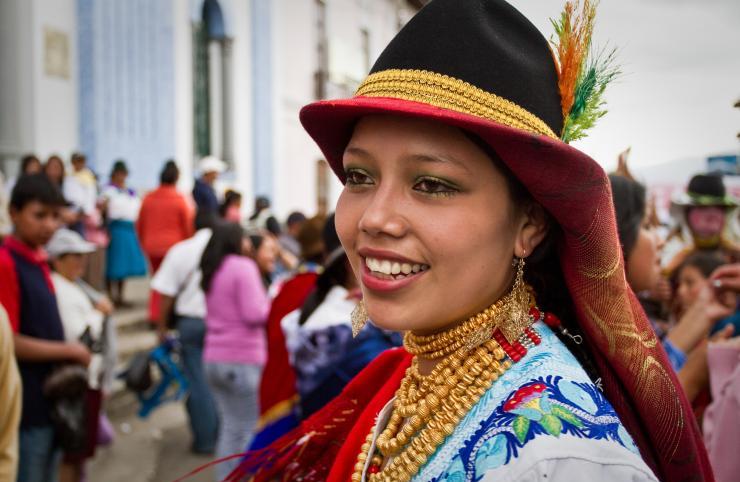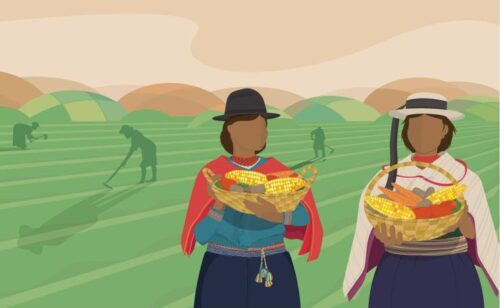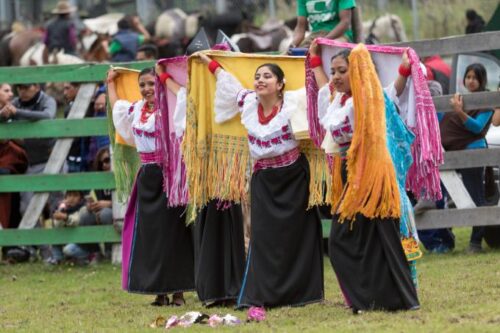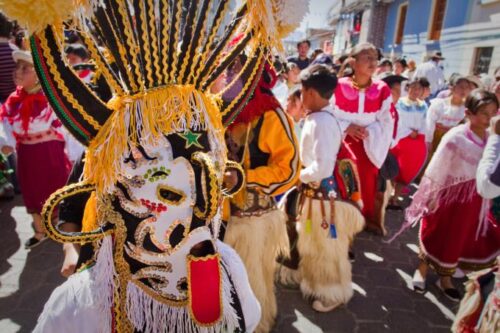Ecuador. June Festivals.

During the month of June, various traditional festivals are celebrated, including Inti Raymi, thanksgiving to the sun and the earth, for the abundance of crops.
The history of these festivals dates back to the Inca empire when they were established to venerate the Sun King and Mother Earth (Pachamama) for the favours received in the harvests. The ritual has remained in force despite the strong Spanish colonization and the imposition of their Catholic religion in these lands.
Faithful to their ancestors, every June 21 Ecuadorians, and in particular the indigenous communities of Kichua origin, dance and go to rivers and waterfalls to purify the human spirit, recover energy and renew their commitment to the land that provides their livelihood.
These events start the national festivities, which last until 1 July and cover the whole territory with traditional dances and music, danced and performed in traditional costumes and accompanied by shared food, including mote, cheese, meat and drinks such as the chicha.

123rf
One of the first rites is the Intiwatana ceremony, with various offerings such as grains, flowers, fruits, spices and musical instruments, which are then brought to be blessed on the altar and seek, as the name suggests, watana and Inti (sun).
The Inti Raymi, on the other hand, is the beginning of the summer solstice, which represents the end of one cycle and the beginning of another, but always with the recognition of father sun and mother earth. Over the years, the Inti Raymi commemoration has also incorporated traditional Andean games, involving everyone present.
Music, dance and ritual acts filled the ceremonial and sacred places, located along the inter-Andean Road because it was believed that in these places the energy of the gods and nature come together to energize those who participate in this celebration.
Traditionally on these dates, different Andean communities get together and prepare different activities and rituals to honour Taita Inti; an example is the Cotacachi, where the spiritual and symbolic ritual of taking over the square summons dancers and musicians, who turn in a circle with strength and courage to keep the earth awake and to receive the offerings of human beings.

123rf
Another important activity on this date is the purification and energy renewal bath, guided by the shamans. Inti Raymi also includes the traditional pampamesa, an ancestral ritual in which typical Andean foods are shared, such as corn, potatoes, malloc, beans and others, combined with different meats, especially that of the guinea pig. The food reflects the togetherness of the community.
The festival has a main character, the Aya Uma (devil’s head), who has important spiritual significance for indigenous communities.
The Inti Raymi shows the syncretism of Andean and Western culture, and the Aya Uma is an example of this. The name of the devil was assigned in the process of the Spanish conquest to sow fear in the indigenous culture, for the celebration of festivals in honour of the divinities of nature such as the Sun, the Moon and the Earth. Over the centuries its name has been handed down as Diablo Huma, but its meaning transcends the evil connotation of the Spanish religion because its function on the day of maximum celebration (June 22) is to gather good energy and to be the connection between the cosmos and earthly life.

Inti Raymi indigenous celebration in Cayambe, Ecuador.123rf
During the festival, the Diablo Huma dances in three tempos to connect with the Earth, the Sun, and the Moon. The man who represents him becomes a spiritual being who breaks the myth to transcend reality and embodies the energies of the deities.
His costume consists of a colourful mask with two faces. He shows the duality of the cosmos (good and evil, sun and moon, day and night, future and present, north and south). He also has hair that symbolizes wisdom and a wheat flower. His mask also has four types of ears which refer to the four directions and four elements of nature: air, water, fire, and earth. His clothing also consists of a whip, a symbol of power and authority. His legs are covered with a zamarro (a garment made of different animal skins) to guide those attending the Inti Raymi festival. In some indigenous communities, the Diablo Huma plays wind instruments while dancing to the rhythm of drums, guitars and the songs of indigenous women.
Over time, many of these festivals have become tourist attractions, with music, dance and the sale of handicrafts and local gastronomy. Despite the changes, the initial goal is always to thank the Earth and the Sun for having blessed and allowed an abundant harvest.(Photo: 123rf)
Pedro Santacruz



